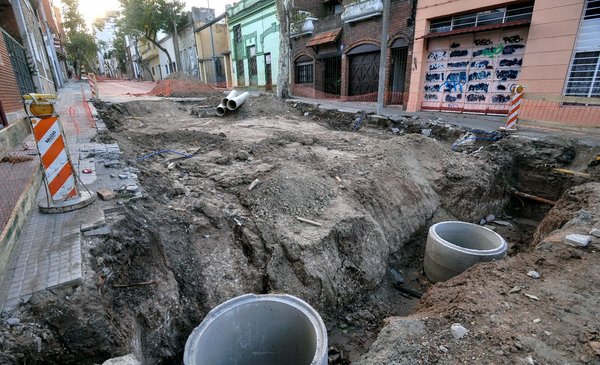The loan for US$ 70 million from the Inter-American Development Bank (IDB) to the Municipality of Montevideo (IM) was on its way to shipwreck when the ruling party and the opposition agreed to an extension of 70 days, which avoided having to start from scratch in the design of a new project from the Washington offices.
Although the new stage – subject to a dialogue table between the administration of Carolina Cosse and white and red mayors – now he has a window of opportunity until April 25, the debate in the Departmental Board begins to lengthen with the proximity of the referendum next March 27.
The coordinator of the Colorado Party bench, Matías Barreto, asked this Wednesday to suspend a meeting for next week. “It is making it difficult for us to meet with our technicians. The LUC vote is approaching and we are very busy”admitted to The Observeradding that “there is still time” to discuss the issues in detail.
In that instance, it was planned that the feasible neighborhoods to clean up outside the amounts already committed by the IDB would be outlined.. A large part of the credit –US$41.7 million– is reserved for waste management, and the commune intends not to open that amount up for negotiation. Another US$22.5 million are for sanitation interventions, for which two points in the capital are contemplated.
Cosse had agreed to the request of the whites to reserve another US$12.5 million to pipe other neighborhoods that were not included in the credit. The nationalists are now taking that figure as a “floor” to negotiate the entry of more localities in the projectas transmitted by political sources to The Observer.
In this sense, the delegation headed by the director of Environmental Development, Guillermo Moncecchi, presented a few days ago a list of neighborhoods that were already included in the sanitation master plan that sets the tone for each of the editions of these loans. Prior to determining the financing, the Cosse’s administration intends to elucidate in which localities it is more feasible to enter the pipes.
According to the document published Search and to which he also agreed The Observerthe IM team detailed eight different points according to their respective towns and calculated the estimated investment to bring the sanitation service there: the towns are Barrio Sarandí, Bella Italia, Boizo Lanza Instructions, Bola de Nieve, two areas of Paso de la Arena and two others in Casabó.
For each of these points, the analysis focused on two central variables that affect feasibility: on the one hand, the investment that would imply for each beneficiary (amount of dollars to spend divided by the population of the place); on the other hand, Aspects to attend to when starting the works –specifically, if it entails relocation of neighbors or expropriations–.
With those data on the table, the IM stood out in the first places of the table to Barrio Sarandí, Bella Italia and Boizo Lanza Instructions, for being the ones with the lowest cost per beneficiary. For example, Barrio Sarandí and Boizo Lanza would imply an investment of US$2,222 and US$2,571 for each neighbor, respectively (expressed at 2017 values). Bella Italia, despite entailing a cost of US$2,167 per beneficiary, would also require at least 10 relocations, something not contemplated in the figures and which complicates the operation.
For the cases of Bola de Nieve and Paso de la Arena, for example, the need to carry out pipeline works between neighborhoods would have to be considered in the equation. At the other point in Paso de la Arena and the other two in Casabó, meanwhile, more than 10 relocations would be required – in the area of Carlos María Ramírez on Paso de la Arena, about 35 would be necessary. At another point, the study warns of possible unidentified relocations and higher costs due to flooding compared to a wetland area.
In all cases, it is about sectors of the periphery, in some points with established settlements. Among all the neighborhoods, they constitute the 10% of Montevideo that still do not have sanitation. The targets, contrary to the items proposed by Cosse for cleanup –for earmarking financing for 23 years for rapidly expendable goods such as containers and trucks– have as their main objective to expand the scope of the sanitation works.
The millionaire loan from the IDB is, until now, the biggest bet of the Cosse administration, but requires a special two-thirds majority in the Departmental Board. The key is held by whites or reds, who must lend the three missing votes to the Broad Front.
The negotiation is now extended with the breathing space that the 70-day extension represents, which also allowed both parties to postpone a sensitive discussion until after the referendum.







